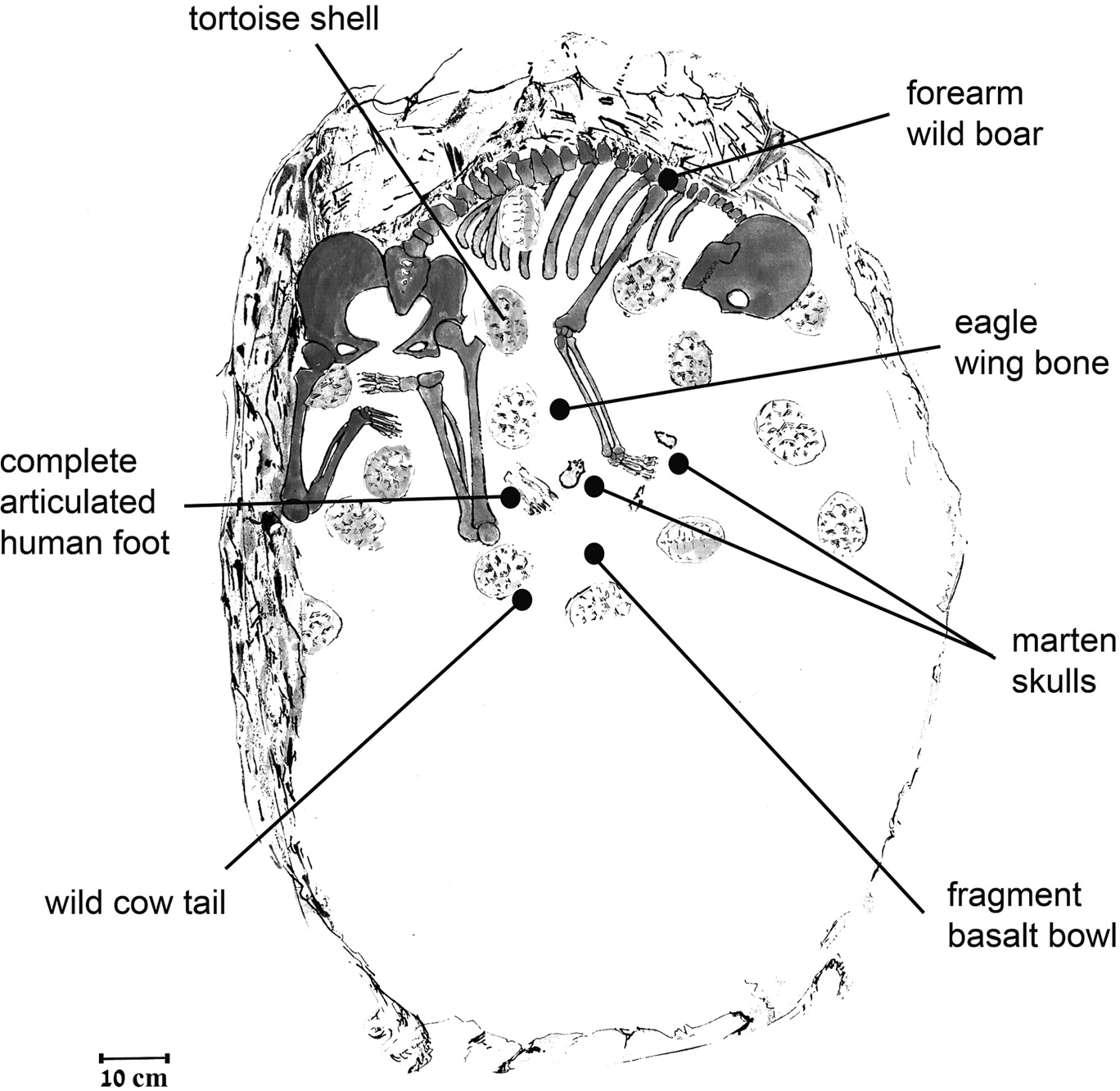Anthropologists speculate her tribe believed she had supernatural powers, because not only was she buried alone, she was buried with a great deal of effort. A human foot, the tail of an ox, part of a boar, the wing of an eagle, and a whopping 50 turtle shells. Those were what would have required the most effort to obtain and signify her importance.
A shaman, sorcerer, witch, whatever name they've gone by in different eras, the idea was the same. She had powers they didn't understand and so they held a feast in her honor.

But the digging from 1995 on may have revealed more than her particular importance. The sheer volume of food-related remains they found may mean that the Natufians, who were early adopters of settling in non-nomadic communities, were hosting feasts in this special place as a way of reducing tension among neighbors who could no longer simply move away.
Just like we invite neighbors for our Halloween party to keep them from calling the cops, celebrations then may have kept people on civil terms.

But keep a sign for that one neighbor 11 houses away you never met that says they never got the flyer and is nervous because someone at the party parked in front of their house.
As Heather Pringle at National Geographic phrased it, "the first villagers made peace by partying."



Comments